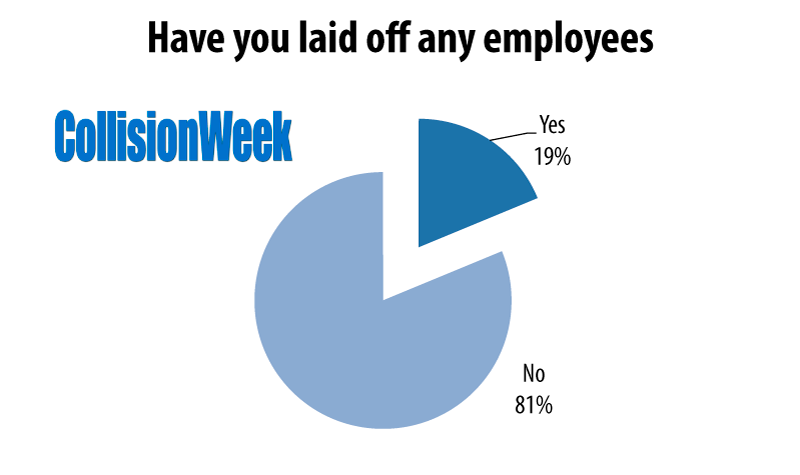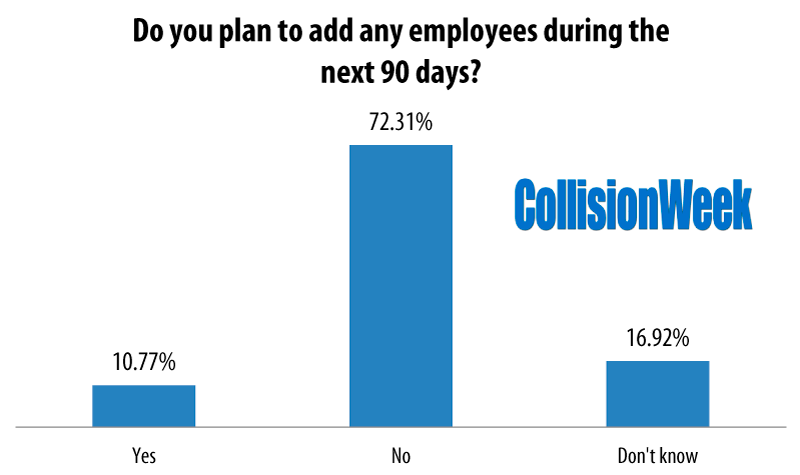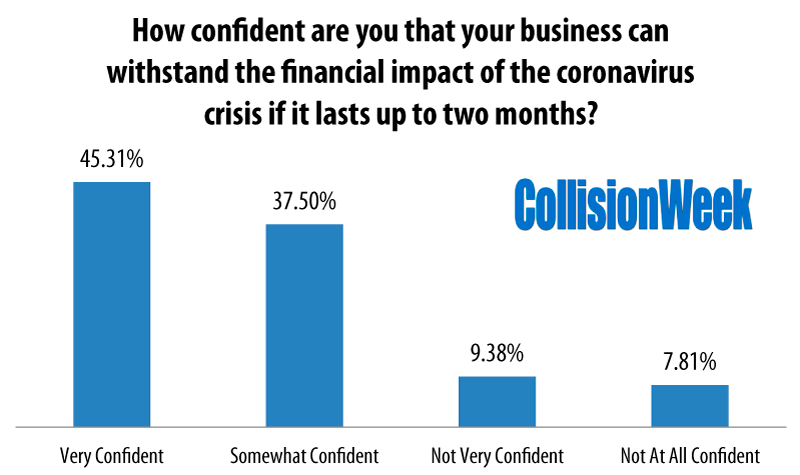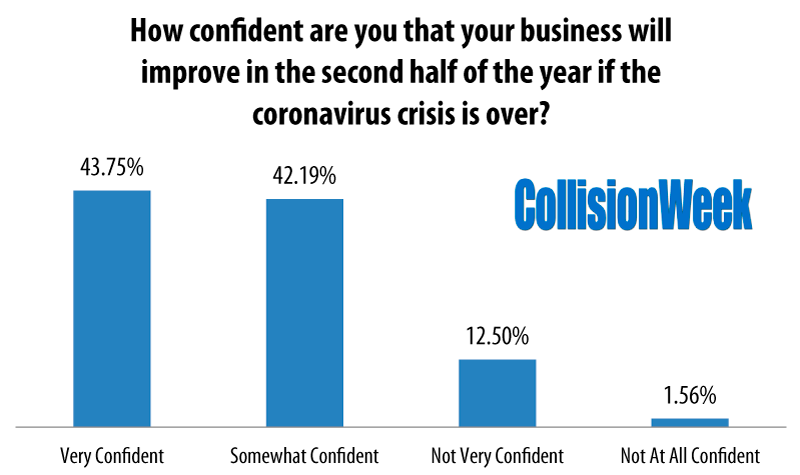All collision repair facilities responding to research were open, but have seen slowdowns due to coronavirus response. Industry businesses donating PPE to health care providers.
Research conducted by CollisionWeek across U.S. collision repair facilities on March 19-20 shows collision repair centers have remained open in the face of the coronavirus response and remain optimistic about the future of their business and growth after the crisis ends. Fully 100% of respondents indicated they remained open last week.
Business had been fairly robust so far this year for respondents to the study with over three-quarters of respondents reporting the same or higher sales during January and February compared to 2019. The sales performance reported is strong given a warmer than average winter period for much of the U.S. that relies on winter weather to boost demand.
According to the research, 38.2% of respondents reported they had higher sales during the two month period and 37.9% reported flat sales compared to 2019.
Just 24.2% of respondents reported lower sales during the January-February period compared to the previous year.
Asked if business had declined since the governmental actions and public concerns over the coronavirus took hold during March, 78.8% of respondents said that sales had declined. Just 9% of respondents said no, and 12.1% were not sure of the impact.
Across those that indicated sales had declined, the average sales decline reported was 40.5% with a median response of 35 percent. The largest declines were reported in New York, California and Pennsylvania where governmental shelter-in-place regulations were first launched.
Numerous respondents in those three markets indicated that the claims volume they took in declined as much as 75% last week as restrictions on essential businesses and shelter-in-place regulations rolled out.
Employment
Asked if they had laid off employees as a result of the decline in business, 18.7% of respondents indicated they had reduced staffing levels and 81.3% indicated they had not. The majority of respondents indicating they had laid off employees were in New York, California and Pennsylvania, with other respondents in Michigan, Minnesota, Virginia, and Rhode Island.
The median number of employees laid off was three, or an average of 18.8% of the total pre-layoff employment in those facilities that reported layoffs.
Asked if they planned to add employees during the next 90 days, 10.77 percent of respondents said yes and 16.92 percent said they didn’t know. The majority, at 72.31% said no.
Supply Chain Issues
A key concern for the collision repair industry is the shutdown of vehicle manufacturing plants and the ripple effect to part suppliers and the overall parts supply chain.
Asked if they had experienced any parts or materials supply issues the majority of respondents at 50.1% said no.
As the chart above indicates, OEM parts supply issues were reported by 30.3% of respondents. Aftermarket parts supply issues were reported by 12.1% of respondents and used parts supply problems by just 6.1%. General paint and materials supply issues were reported by 15.2%.
Personal protection equipment (PPE) supply issues were reported by 16.7% of respondents.
In the face of widespread shortages of PPE for medical providers responding to the crisis, the government provided waivers for health care providers to use industrial PPE equipment. According to 3M, for example, 90% of their N95 masks typically go to general industrial and commercial users and were now being delivered to health care.
Numerous collision repair respondents in the worst affected areas indicated in comments to the survey that they were donating excess stocks of their PPE equipment at the end of last week to medical providers facing shortages in their local communities.
(Editor’s Note: CollisionWeek would urge all collision industry businesses that have stocks of PPE beyond their immediate needs, particularly collision repair schools and training centers that are currently closed, to reach out to health care providers in their local area to see if they need donations.)
Optimism for the Future
To gauge collision repair industry concerns how the slowdown might impact the viability of their business, we asked respondents about the confidence they had that they could weather the financial issues from a crisis that lasted up to two months, or that lasted longer. We also asked respondents about the confidence they had that business would improve in the second half of the year if the crisis was over.
Overall, respondents were confident their business would survive with both short and longer term disruptions to demand.
As the chart below indicates, over 80% of respondents were very or somewhat confident they could withstand the financial impact of the coronavirus crisis if it lasts up to two months. Nearly half of respondents at 45.31% indicated they were very confident and 37.5% were somewhat confident.
Those who indicated they were not very confident total 9.38% of respondents and an additional 7.81 percent said they were not at all confident.
As can be expected, confidence declined if the coronavirus crisis extends longer than two months. Those who were very confident they could withstand the financial impact declined over 10 percentage points to 32.81% while those that were somewhat confident declined less than two percentage points to 35.94%.
Those respondents who indicated that they were not very confident were up over six percentage points to 15.63% of respondents overall. Those who indicated they were not at all confident nearly doubled to 15.63%.
Looking past the current crisis, when asked if they were confident that business would improve in the second half of the year if the coronavirus crisis was over, over 85% of respondents were very or somewhat confident it would improve.
Those who were not very confident totaled 12.5% of respondents and just 1.56% of respondents were not at all confident.





